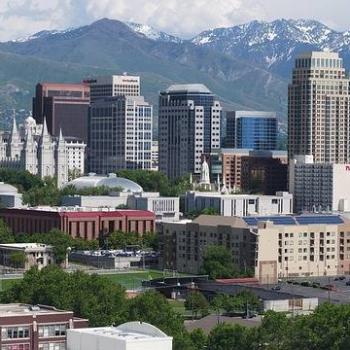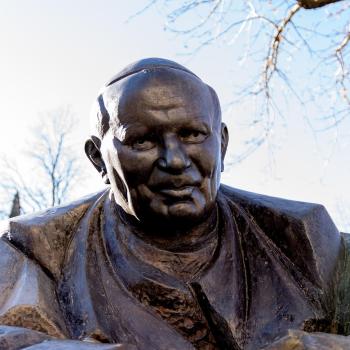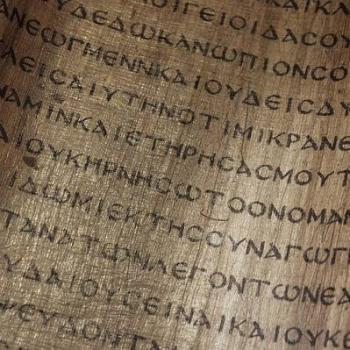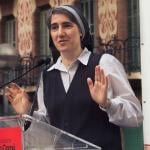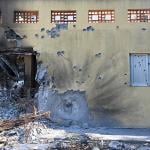DEANN’S QUESTION:
Are the congregants massacred in Sutherland Springs martyrs?
THE RELIGION GUY’S ANSWER:
A shooting rampage during Sunday worship at First Baptist Church in Sutherland Springs, Texas, took 26 lives (if we count an unborn baby). It was the worst slaughter at a house of worship in American history, though such atrocities occur all too often at churches in strife-ridden Islamic lands and more often at mosques — witness more than 300 Muslim worshipers massacred November 24 at Bir al-Abed, Egypt.
The murderer — “Religion Q & A” will not dignify him by using his name — sprayed hundreds of bullets at helpless worshipers trapped in the pews, and may have especially targeted youngsters.
We usually think of a martyr as a brave Christian executed by authorities or slain otherwise for professing the faith or refusing to spurn it, as with the biblical St. Stephen (Acts 7:54-60).
Unlike Southern Baptists, Catholicism specializes in martyrology and has recognized as saints hundreds across the centuries who faced death for professing their faith. The church’s official definition:
“Martyrdom is the supreme witness given to the truth of the faith: It means bearing witness even unto death. The martyr bears witness to Christ who died and rose, to whom he is united by chrity. He bears witness to the truth of the faith and of Christian doctrine. He endures death through an act of fortitude” (Catechism #2473). Understand that here “he” covers both genders.
A more succinct Russian Orthodox definition says “martyrdom is bearing witness to the truth of Christ and God’s church to the death.” Whether that’s the appropriate label for the Texas victims depends on the motives of both the killer and those killed.
Begin with what’s known about the gunman. There’s ample evidence he was severely troubled, violent, and should never have been able to purchase weapons. State officials said “there was a domestic situation going on within the family” and “it wasn’t over religious beliefs.” Perhaps.
If he wanted to gun down the despised mother of his estranged second wife, she wasn’t even present. He did murder his wife’s grandmother, but did he aim at her? And why murder 25 others he didn’t even know? Since he killed himself after the attack and left no note, nobody can know.
Even if the chief cause was family fury, the assailant pointedly chose church worship for his venue, rather than homes or work places. Deann’s full posting says “they clearly died for their faith. The shooter singled out that particular church to receive his wrath.” The mother-in-law was active at First Baptist and his wife was previously, so it’s possible his fevered mind fused personal hatred with their Christian identity. Again, we’ll never really know.
A former U.S. Air Force colleague told The New York Times that his Facebook postings mentioned an “obsession” with the man who murdered nine innocent Bible study attendees at Emanuel African Methodist Episcopal Church in Charleston, S.C.
Was his own hatred of religion a factor? Apparently the murderer had a conventional Protestant childhood but somehow turned sharply hostile. One high school classmate recalls “he was the first atheist I met” while another says “he was always talking about how people who believe in God are stupid and trying to preach his atheism.” Did that viewpoint somehow curdle into insane intent? There’s no clear evidence.
Moving from all those uncertainties, the pivotal aspect becomes the Baptists. The victims did not stroll into church that pleasant morning expecting to make the ultimate sacrifice as they witnessed by participating in worship. Therefore, the deceased were not martyrs by conventional understanding. Rather, they were innocent victims of a senseless atrocity that possibly involved hatred toward belief or believers to some unknown extent.
Now, since this autumn marks the 100th anniversary of the Communist Revolution, let’s add a related emphasis, that some instances of undisputed martyrdom are so massive the identities of the victims can never be fully known but to God. Russians celebrate a special Orthodox Eucharist annually to honor the collective witness of the Communist era’s “martyrs and confessors of the Russian Church,” among whom more than 1,700 have been identified by name.
A Library of Congress report observes that the former Soviet Union was the first regime in history “to have as an ideological objective the elimination of religion,” carrying forth Karl Marx’s hatred toward faith. In that cause “nearly all of [Russian Orthodoxy’s] clergy, and many of its believers, were shot or sent to labor camps.” By 1939, only some 500 of the nation’s 50,000 churches were allowed to remain open.
Another source is Alexander Yakovlev, author of “A Century of Violence in Soviet Russia” (Yale, 2002). This onetime state propagandist and member of the elite Soviet Politburo became a reformer and chaired the Russian government’s post-Communist investigation of the death toll.
Much slaughter involved political dogma, social class, and personal rivalries, but Yakovlev said the Reds systematically murdered some 200,000 Orthodox priests, monks, and nuns. These Christians were variously shot, sent to die in concentration camps, frozen to death, crucified, scalped, strangled, drowned, and “submitted to other bestial tortures.” He says “Lenin gave the order” that originated the Party’s “campaign of merciless terror,” which was then carried forth by Stalin.
After Soviet Communism collapsed, Patriarch Aleksy of Moscow prayed, “May the blood of the new martyrs become for the faithful of the church a seed of faith that will spring forth to life eternal.”
Of the 70 million martyrs across church history, half died in the 20th Century under Communists and other totalitarian rulers, according to the estimate of the Center for the Study of Global Christianity at Gordon-Conwell seminary. The center says 1 million Christians were martyred just from 2000 to 2010, or 100,000 per year. Think of it.




